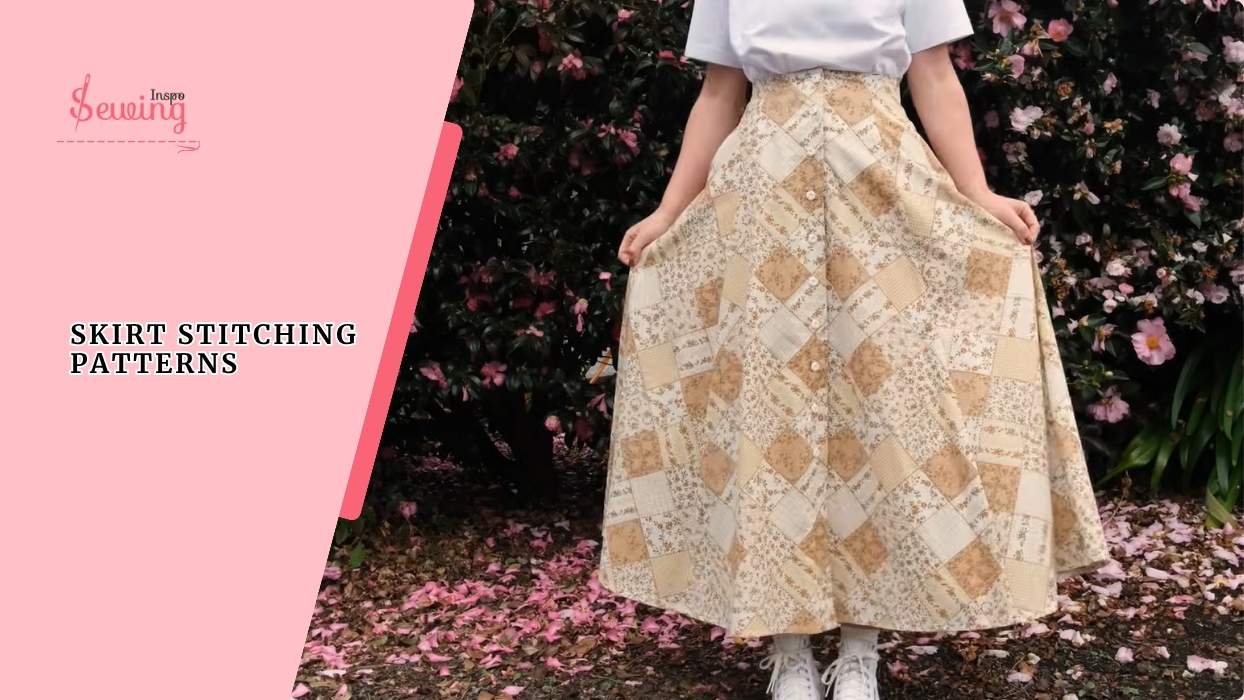I remember the first time I stumbled upon a blanket stitch, it wasn’t in a sewing book or an online tutorial, but rather in the quiet of my grandmother’s sewing room. I had always admired her ability to make something as simple as a patch of fabric feel like a work of art.
But at 1st, I always struggled and was confused about which tool to use for which stitch. When I started to do blanket stitching, my struggle got worse. So, I made a blanket stitch sewing tool.
Look at the list; it will save you your struggle. Let’s get into the blanket stitch guide tool.

Table of Contents
Blanket Stitch Sewing Tool
The hand blanket stitch is simple yet effective if you work with the right tools. Here’s how to do it and what you need:

Diy Blanket Stitch Sewing Tool
Initially, I struggled to keep the blanket stitch size even. I stitch and remove the stitch 100 times. Seeing my struggle, my grandma made me a DIY tool.
This tool, which is made from rubber sheets and cardboard, has really helped me do my projects. The holes in the cardboard ensure my stitches are evenly spaced.
So my work looks more polished and professional. The rubber strip grips the fabric, keeping it in place as I stitch, so I don’t have to worry about shifting around.This is basically a template for blanket stitch.

It also speeds up the process since I don’t have to measure or align my stitches constantly. Overall, it makes stitching faster, more consistent, and less stressful. It helps me become pro for sure.
Blanket Stitch Needle
A size 24 chenille needle is a great choice for blanket stitch. It’s thin and sharp enough to glide through the fabric without making large holes. Here are other types of hand-sewing needles and their sizes:

- Sharps: Medium-length needle with a round eye, sizes 1–12. The standard sewing needle for most general sewing tasks.
- Betweens: Shorter, sharper, and narrower than sharps sizes 3–12. Also known as quilting needles, they are ideal for detailed work. like long and short blanket stitch embroidery!
- Darners: Longer than sharps, sizes 5/0–9. Designed for basting and darning.
- Millinery: Longer than conventional needles, sizes 5–10. Perfect for hat-making or delicate fabrics. This needle can also be used in whip stitch or blanket stitch.

- Chenille: Similar to tapestry needles, sizes 16–24. Great for appliqué, embroidery, and thicker threads.
- Crewel: Made from hardened steel, sizes 3–10. Ideal for embroidery with fine threads. This is even perfect for a double blanket stitch.
- Beading: Very fine and straight with long eyes, sizes 10 and 12. Specifically for threading beads onto fine threads.
Blanket Stitch Thread
There are many kinds of threads for blanket stitch also. The most commonly used threads are-

| Thread Type | Common Sizes |
| Embroidery Floss | 1 strand, 2 strands, 6 strands |
| Perle Cotton | Size 3, 5, 8, This is the perfect double blanket stitch tutorial applique. |
| Cotton Thread | 30 wt, 50 wt, 60 wt |
| Wool Thread | Worsted (about 8 ply) |
| Floss (Mouliné) | 6 strands |
| Silk Thread | 12, 16, 30 wt |
| Jeans Thread | 30 wt, 40 wt |
| Sashiko Thread | 12, 16 wt |
For most blanket stitch projects, I use perle cotton size 5. It’s not too thick or thin and gives a nice, even stitch. That’s why I love to use it for embroidery. I especially love doing German Knotted Blanket Stitch with it.
Blanket Stitch Fabric
I love working with wool felt for my blanket stitch projects. It’s just the perfect fabric for those soft, neat stitches. Wool felt has a nice thickness that holds its shape well, and the edges don’t fray.
So it’s ideal for blanket stitching around appliqué pieces. I also use fleece fabric for lighter projects like blankets. The cotton fabric gives me more control over the stitch since it’s not too thick but still has enough texture to make each stitch stand out.

I sometimes go for linen or canvas for a more textured and rustic look.
But if you have one specific fabric that is best for all kinds of blanket stitches, then,
I would say the felt fabric is the most suitable for blanket stitches.

All Blanket Stitch Tool
I feel lost after reading all those tools & sizes and all. I know. That’s why I made this clear list of what you need.

- DIY Blanket Stitch Template
- Size 24 Chenille needle
- Perle cotton size 5 thread
- Wool felt fabric is thick, doesn’t fray, and is ideal for appliqué
Get those, and you are ready to stitch. Those will help you do different type of stitches.
Blanket Stitching Thumb Guide Tool
Blanket Stitch Sewing Tool Pdf
That’s all you need to do a blanket stitch perfectly. But getting everything right is hard, so insist on memorizing it download the PDF, and save it for later.
Sewing Tools With Names And Pictures And Uses
So that’s all the blanket stitch sewing tools I normally use. And those tools are pretty much used in all kinds of sewing. But there are a few hand sewing tools that vary depending on your stitch type. For intense,

Grab The Right Tool & Start Stitching
learning the blanket stitch was a journey for me. I struggled at first, unsure of which tools to use, but after creating my own DIY tool and finding the right needle, thread, and fabric, everything clicked. I hope those tools will help you out the way it help out me before.





Leave a Reply